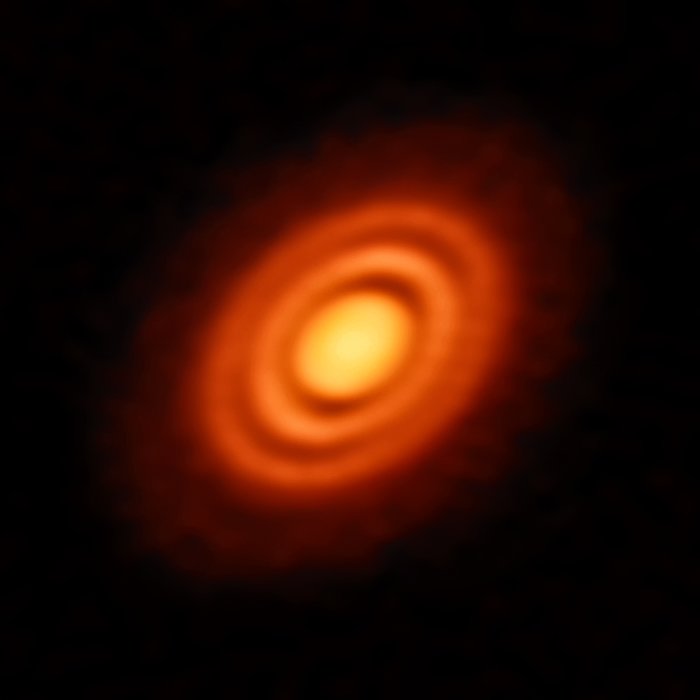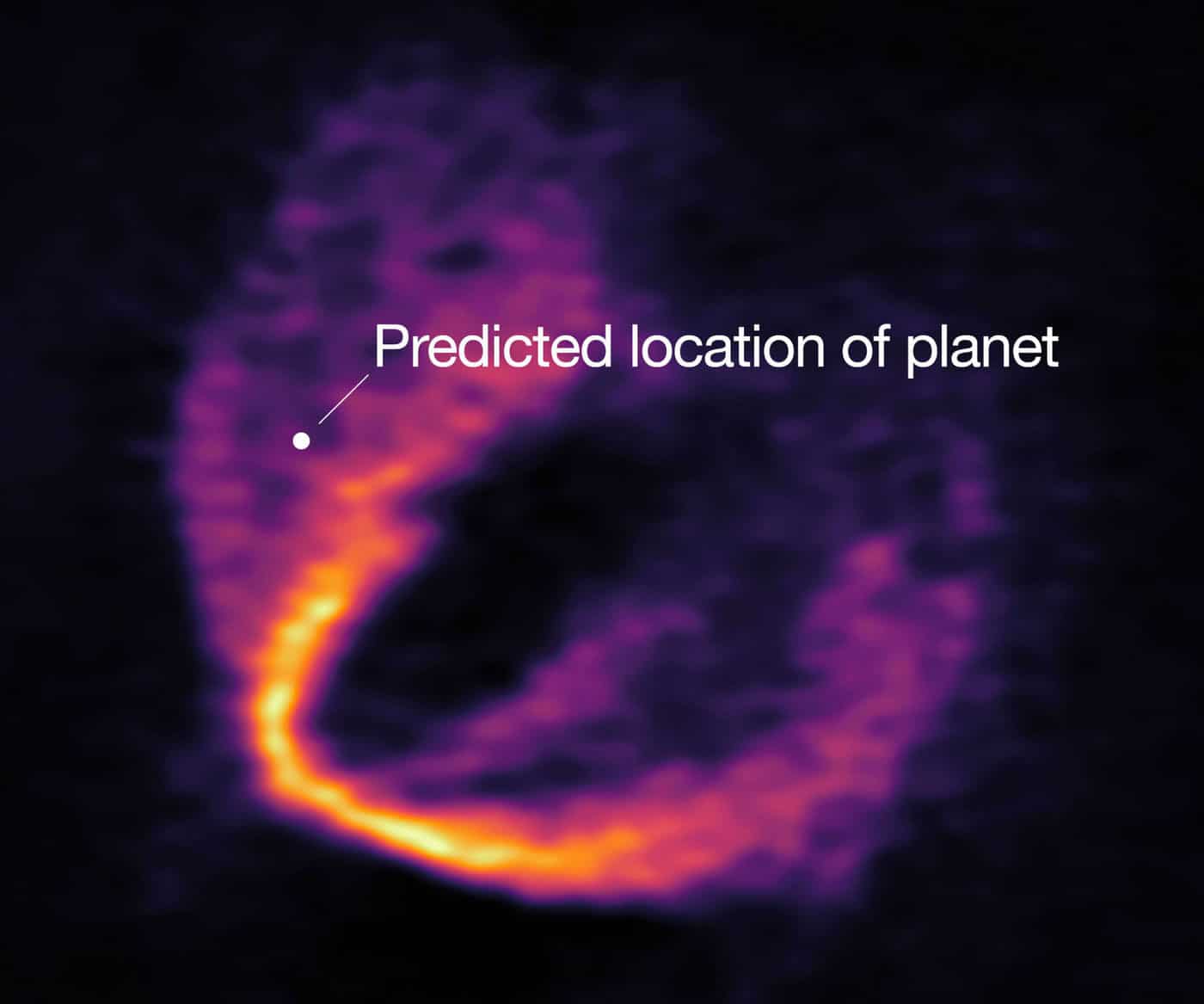Using ALMA, two independent teams of astronomers have discovered three disturbances in the gas-filled disc around the young star: the strongest evidence yet that newly formed planets are in orbit there. Through this finding, astronomers have unveiled convincing evidence that three young planets are in orbit around the infant star HD 163296.
The Atacama Large Millimeter/submillimeter Array (ALMA) has changed our comprehension of protoplanetary plates — the gas-and-dust filled planet factory that surrounds encircle stars. The rings and gaps in these circles give fascinating fortuitous confirmation to the presence of protoplanets [1]. Other marvels, nonetheless, could likewise represent these tantalizing features.
Be that as it may, now, utilizing a novel planet-hunting system that identifies unusual patterns in the flow of gas within a planet-forming disc around a young star, astronomers affirmed distinct, obvious signs of recently framed planets orbiting an infant star.

Astronomers analyzed ALMA observations of HD 163296, a young star about 330 light-years from Earth in the constellation of Sagittarius. This star is about twice the mass of the Sun but is just four million years old — just a thousandth of the age of the Sun.
They observed localized, a small-scale motion of gas in the star’s protoplanetary disc. Scientists studied carbon monoxide (CO) gas spread throughout the disc.
Molecules of CO emit a very distinctive millimeter-wavelength light that ALMA can observe in great detail. Subtle changes in the wavelength of this light due to the Doppler effect reveal the motions of the gas in the disc.
The team led by Teague identified two planets located approximately 12 billion and 21 billion kilometers from the star. The other team, led by Pinte, identified a planet at about 39 billion kilometers from the star.
The procedure utilized by Teague, which determined an average value of varieties in the flow of the gas as little as a few percents, uncovered the effect of numerous planets on the gas movements closer to the star. The system utilized by Pinte, which all the more straightforwardly estimated the flow of the gas, is more qualified to concentrate the external segment of the disc. It enabled the creators to all the more precisely find the third planet, yet is limited to bigger deviations of the stream, more prominent than around 10%.
In the two cases, the scientists distinguished zones where the stream of the gas did not coordinate its surroundings — somewhat like whirlpools around a stone in a waterway. Via precisely examining this movement, they could unmistakably observe the impact of planetary bodies comparable in mass to Jupiter.
Coauthor Ted Bergin of the University of Michigan said, “We are now bringing ALMA front and center into the realm of planet detection.”
The study is published in the Astrophysical Journal Letters.
